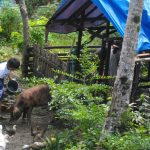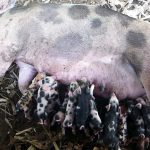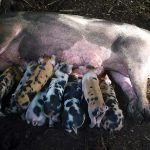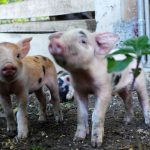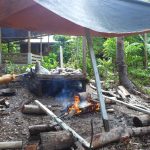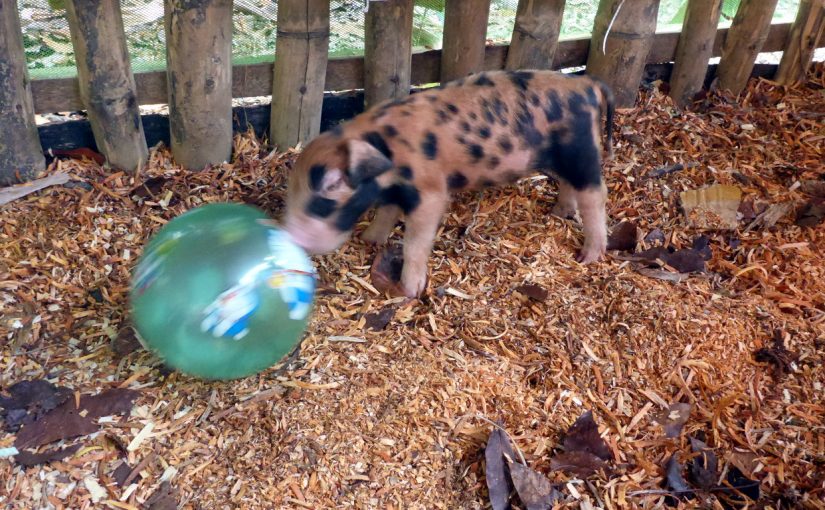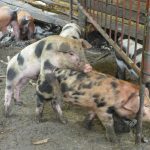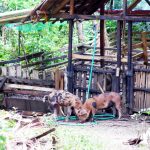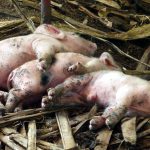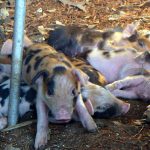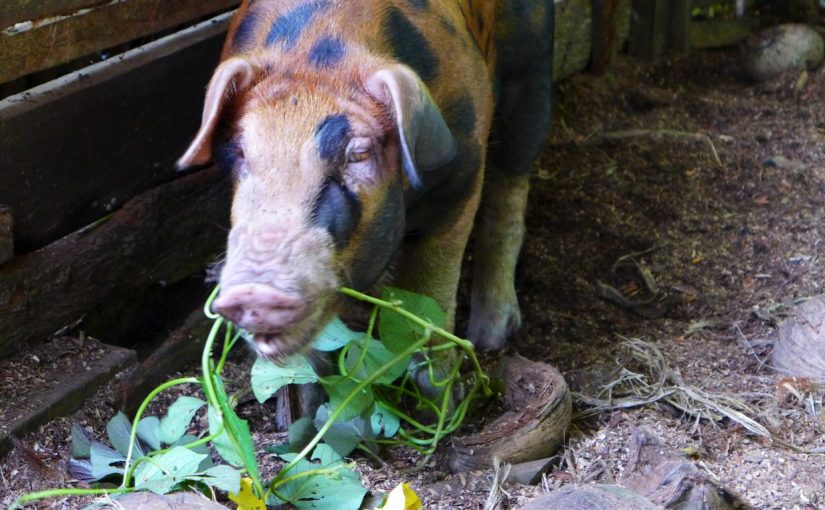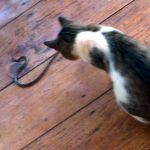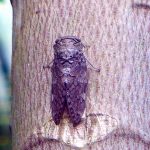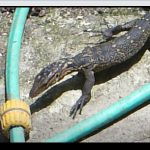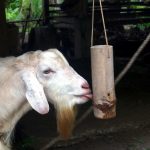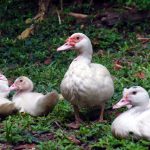Typhoon Odette was very destructive. Our neighbors that kept poultry in cages suffered losses. Our ducks and chickens were unharmed because they were free ranging and found their own safe places. The couple chickens in a small coop under the house were okay. Even the newly hatched ducklings were fine beneath their mother’s wings. Majority of ducks and chickens stayed under the house, protected from wind, rain and falling and flying debris. One young chicken stayed in her comfortable roosting place, a beam over the entrance of the house, about 12 feet high above the ground. It was a safe place because the roof of the house protected her.
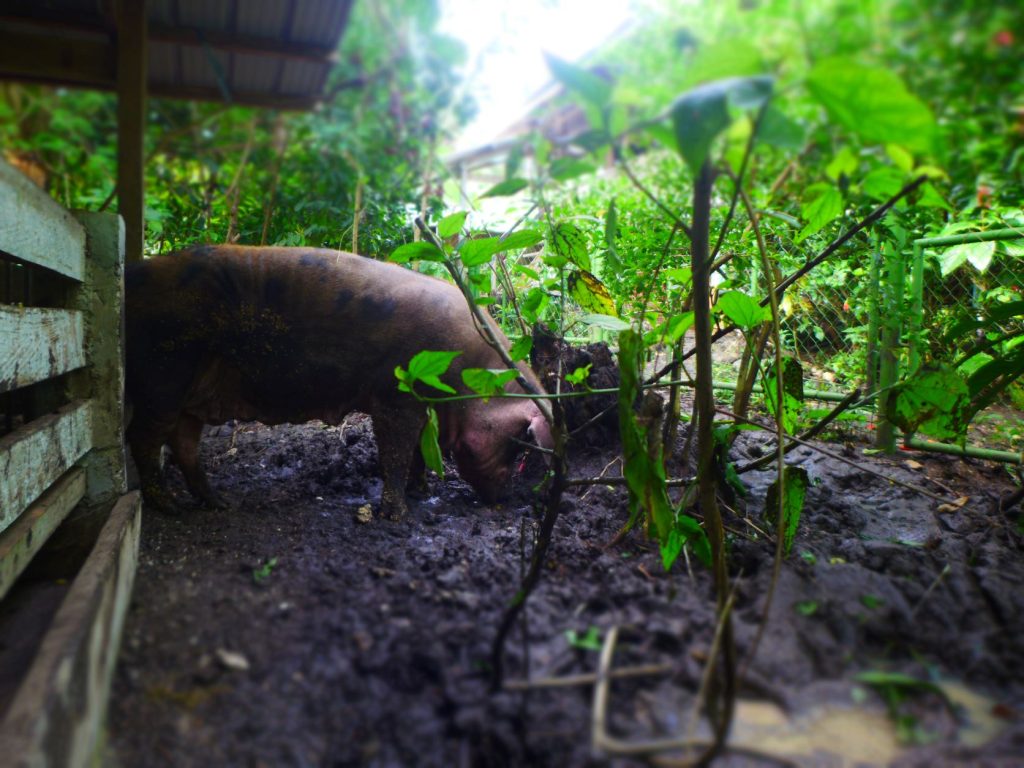
The biggest impact was on the pigs. When the typhoon landed, I had a boar, two gilts and one very pregnant sow due in 2 weeks. A portion of the boar pen roof and fence was damaged by a fallen coconut tree. The sow housing was surrounded by fallen branches and trunks of gmelina, mango, ficus and various other trees. The pen where the two gilts stayed together was about a foot deep with muddy water.
The morning just after the typhoon we had to get help clearing the paths. It wasn’t easy going under and over fallen debris to feed the pigs. The boar and gilts were hungry and eager to eat. However, the sow seemed the most distressed. She ate, drank and lay down exhausted.
When the sow farrowed two weeks later, she had so much troubles. She was distraught, feverish, and seemed determined to lay on all her piglets. She had 15 piglets and when it seemed like they were all going to die, we decided to collect what was left and raise them ourselves. The piglets were not even two days old when we took them away from the sow.
The sow recovered and the piglets that survived made it to weaning age and were promptly sold. All seemed well, but there were a few subtle changes that I felt were an effect of the terrible distress brought by the typhoon.
For sure, all the pigs are more cautious and nervous and irritable than usual. The least affected are the two gilts. This is probably because they are housed together and had each other for social support. The boar, nearing 7 years of age, seemed unaffected. Beneath the debris of roofing sheets and broken lumber, he was more concerned with getting fed. However, he is now more easily agitated by the presence of people particularly if they are making noises around his pen.
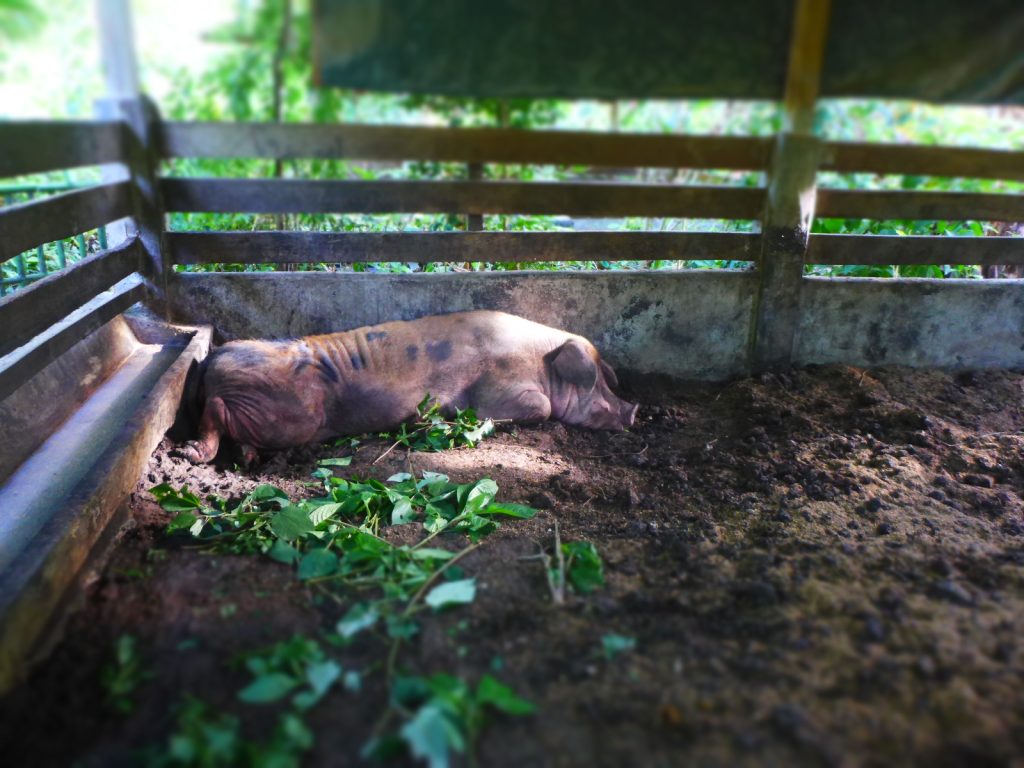
The most tragic impact was upon the sow, now nearing 4 years of age. The failure to care for her piglets was the first most obvious tragedy. Then over a month ago, her distress culminated in inappetence. I was puzzled and considered all sorts of viral or bacterial infections. But the symptoms were not there. The behavior linked to inappetence was so strange: more motivated rooting, crossing of back legs while walking, yawning, vocalizations in response to the boar. There were moments when she seemed to be getting better and started eating, but this would stop and she would return again to being a terribly picky eater. What she ate a little of today, she won’t eat tomorrow. She drank but not as plentiful as her usual self, and she would turn over her drinking bowl as if looking for something else beneath it.
The sow escaped from her pen once and visited the boar. I have put them together now and she is free to root in a large space. I wanted her to be as comfortable as possible, free to roam and choose the food she wishes to eat, and to have company. The symptoms, I think, are more psychological (and at the same time hormonal) than anything else.
At this point, I did several minutes of Googling and found what may be the answer to this mystery: Anorexia-like Wasting Syndromes in Pigs
I read that influencing the serotonin in the brain may be a solution but I don’t have the means to do this on this island. Typically, this sow would’ve been culled a year or two earlier. But I don’t cull hard, unfortunately, because the facilities available for doing this to large animals is too cruel for my standards.

This year, I have been working hard on a lot of changes that I didn’t get the chance to do over the past 12 years. Now my pigs have more space and freedom to root and forage. I continue to learn by observing the areas where they root and see how seasonal foraging would allow the growth of plants. With a very small herd, it is sooner than later possible to move away from large domesticated pigs that I currently have – a mix of typical industry breeds such as duroc, largewhite, landrace and pietrain – and transition to the much smaller and robust Philippine native pig. By the time I am ready to transition, the right breed for this island environment will hopefully be available. The fenced areas for the pigs may also be used for goats and perhaps other meat birds such as Rhode Island Reds which are quick finishers and aren’t as wild and rowdy as the native chickens.

Lately, I’ve sold enough of the ducks and chickens so that the crops would have a better chance of growing. I’ll be transitioning to growing more crops that we can eat, more native plants and trees for the wildlife, and hopefully diversifying into simple aquaculture. I already have tilapia but would like to add “hito” or mudfish) and freshwater lobsters (crayfish). Aquaculture is quite important to me because I am experiencing the effect of pollution on marine resources on this island and I think that fish and seafood provide essential nutrients that other sources cannot.

Overall, my values and goals have not changed. I grow food for our consumption, not for commerce. If there’s anything to sell it’s because there’s surplus. When we take good care of nature she is very capable of providing abundantly.

